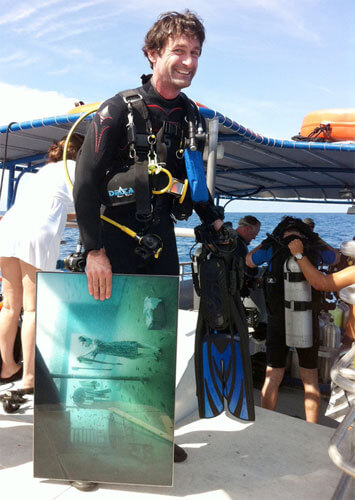Andreas Franke is in the business for more than twenty years.
For Luerzer‘s Archive he is among the 200 Best Photographers. He worked for great brands like Ben&Jerry's, Coca-Cola, Ford, General Electric, Gillette, Heineken, Nike, Visa or Wrigley‘s. His still lifes and his surreal effects are famous. In his pictures every little detail is planned precisely. There is no space left for fortuity. Andreas Franke is a traveler. He travels through the world and between the worlds. His job frequently leads him to several countries on several continents. So does his passion the scuba diving.
In his pictures Franke crosses the borderlines between fantasy and real life.
With his project “The Sinking World“ Andreas Franke brings a strange, forgotten underwater world back to life and stages realms of an unprecedented kind.
The pictures engender extreme polarities: the soft, secretive underwater emptiness of sleeping shipwrecks is paired with real, authentic sceneries full of liveliness and vigor, thus creating a new world, equally bizarre and irresistibly entangling. The resting giants at the bottom of the sea do not only form fascinating and unique backgrounds for Andreas Franke’s sceneries. They also constitute the best exhibition sites imaginable. These spectacular underwater galleries make divers fall under their spell and display the work of the ocean itself. During the weeks and months under water the ocean bequeaths impressive, peerless traces to the pictures. It adorns them with a certain, peculiar patina, endowing them with the countenance of bizarre evanescence and transfiguring them into rare beauties.
